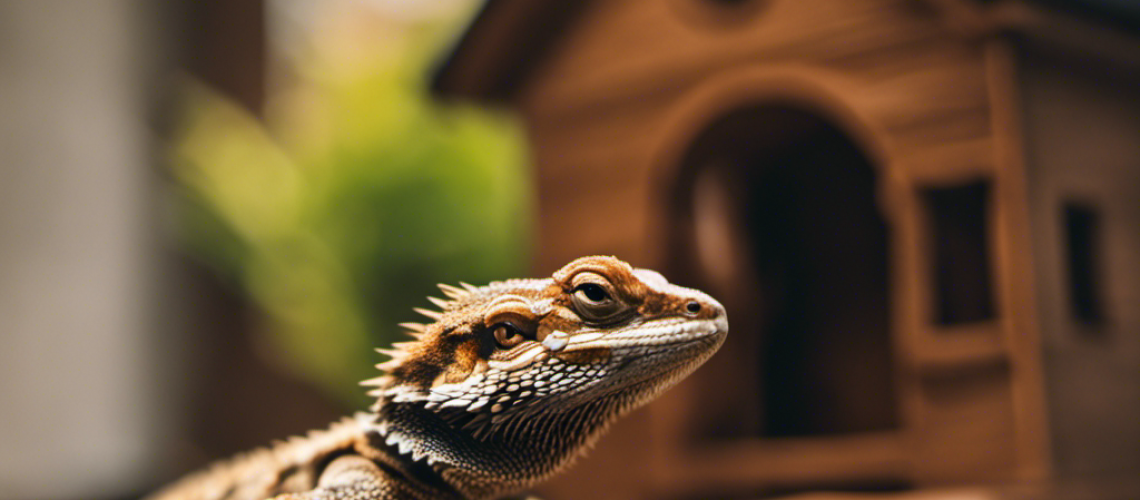Do you want to add a Bearded Dragon to your family, but have cats, dogs, or other pets? You may be wondering if they can all get along.
It’s possible for Bearded Dragons and other pets to coexist peacefully with the right conditions and proper introductions.
Learn about the types of Bearded Dragons, the risks and benefits of keeping them with other pets, how to introduce them safely, what to do if they don’t get along, and tips for peaceful coexistence.
Key Takeaways
- Keeping a bearded dragon with other pets can provide an enriched environment and improve socialization skills for the dragon.
- However, it is important to consider the potential risks, such as increased stress levels, disease transmission, and competition for resources.
- When introducing a bearded dragon to other pets, it is crucial to create clear boundaries and monitor their interactions for any signs of uneasiness or fear.
- Peaceful coexistence between bearded dragons and other pets can be achieved through positive reinforcement training, establishing boundaries, and maintaining a relaxed atmosphere.
Types of Bearded Dragons
Bearded dragons come in different types, such as leatherback, silkback, and German giant. Depending on the type, they may require specific diet requirements or larger enclosures.
They’re active lizards that need plenty of space to roam around and bask in the sun. Regular handling is important for socialization but should be done carefully to avoid stressing them out.
With proper care, these friendly reptiles can make great pets!
Benefits and Risks of Keeping a Bearded Dragon With Other Pets
Keeping other pets with a bearded dragon can offer both benefits and risks. Socializing dynamics, habitat sharing, and overall safety are key considerations when deciding if this is the right path for you.
Here’s a quick rundown of what to expect:
-
Benefits: An enriched environment, better socialization skills, and more companionship.
-
Risks: Increased stress levels, potential disease transmission, and competition for food or space.
Before introducing any new pet into your home, it’s important to weigh the pros and cons of cohabitation.
How to Introduce a Bearded Dragon to Other Pets
Introducing a bearded dragon to other pets can be tricky, so it’s important to take extra precautions for a successful introduction.
Create an environment with clear boundaries and enough space for all creatures to move around comfortably.
Allow your beardie time to adjust to its new surroundings before introducing them to the other pets.
Monitor socializing habits and respect their needs and environmental needs; if they seem uneasy or scared, separate them right away.
With patience and understanding, both species can live together peacefully!
What to Do if Your Bearded Dragon and Other Pets Don’t Get Along
If your other pets and bearded dragon don’t seem to get along, it’s important to take steps quickly to ensure the safety of all creatures.
Make sure you:
- Supervise when introducing them to each other
- Have a plan for cat training in case needed
- Monitor the dragon’s health and care closely
Be mindful of potential risks so that everyone can live happily together while still enjoying their freedom.
Tips to Help Bearded Dragons and Other Pets Coexist Peacefully
To ensure a peaceful coexistence between your other pets and bearded dragon, it’s important to take the right steps. Train both animals with techniques such as positive reinforcement.
Consider rearranging their cages to help create boundaries and reduce stress.
Monitor interactions when they’re together and separate them if things get too heated.
Lastly, try to keep the atmosphere relaxed and be patient—the more time you invest, the better off everyone will be!
Frequently Asked Questions
What Type of Environment Is Suitable for a Bearded Dragon?
Your bearded dragon needs a warm, dry environment with plenty of space for exploring and socializing. Make sure the temperature is right, as they need it to be between 80-90 degrees Fahrenheit. Provide them with objects for stimulation and ensure their needs are met!
What Kinds of Food Should a Bearded Dragon Eat?
Feed your bearded dragon a varied diet to meet its dietary requirements. Offer live food such as crickets, worms, and insects as well as vegetables and some fruits. Monitor its feeding habits to ensure it’s getting the nutrition it needs.
How Often Should a Bearded Dragon Be Handled?
Handle your bearded dragon regularly, but not too often. Allow it to socialize with you and other people in the household. The handling frequency should depend on its comfort level; every few days is usually enough for a healthy social interaction.
How Much Space Does a Bearded Dragon Need?
Installing a vivarium for your bearded dragon is important. Handling with precautions is essential to ensure it gets enough space. A minimum of 20 gallons per dragon should be provided – the bigger the better! Enjoy the freedom you can provide them in their new home.
Are There Any Special Health Considerations to Keep in Mind When Keeping a Bearded Dragon?
Monitoring your beardie’s diet and temperature fluctuations is important for its health. Make sure to provide adequate nutrition and keep temperatures in the right range for optimal wellbeing. Be vigilant, but give your pet freedom to enjoy life!
Conclusion
It’s possible for your bearded dragon and other pets to get along, but it’s important to take proper precautions.
Introduce them slowly, monitor their interactions closely, and make sure the dragon is well fed and comfortable in its habitat.
If they don’t seem to be getting along, try separating them or giving the other pet more space.
With some patience and understanding, your furry friends can learn to coexist peacefully.






